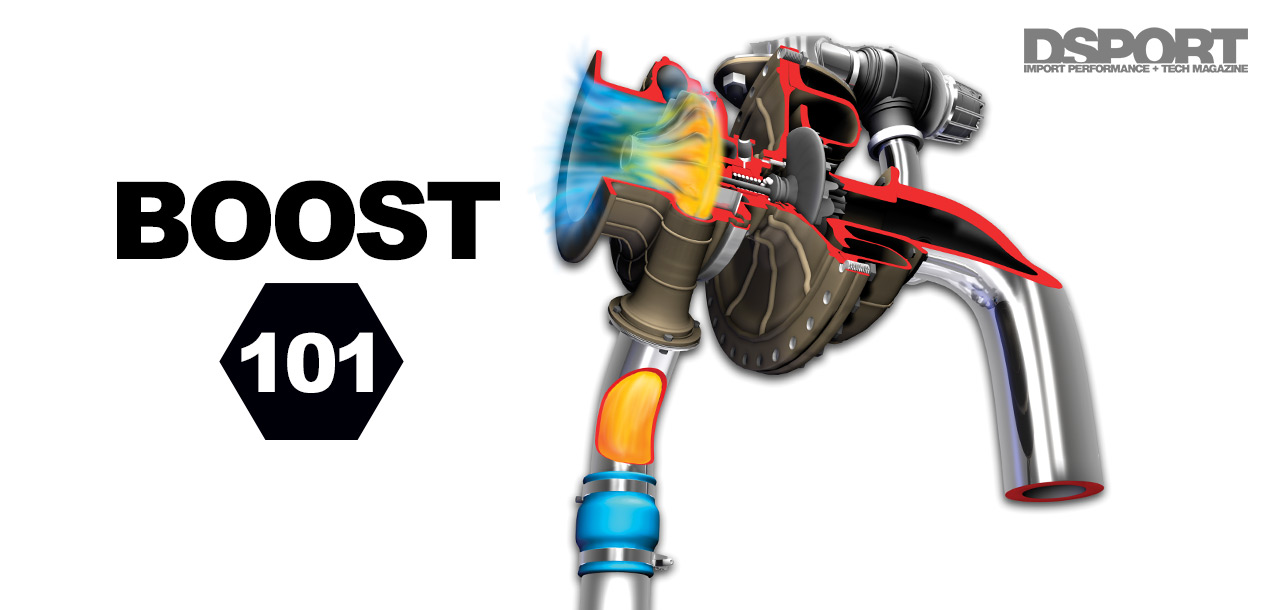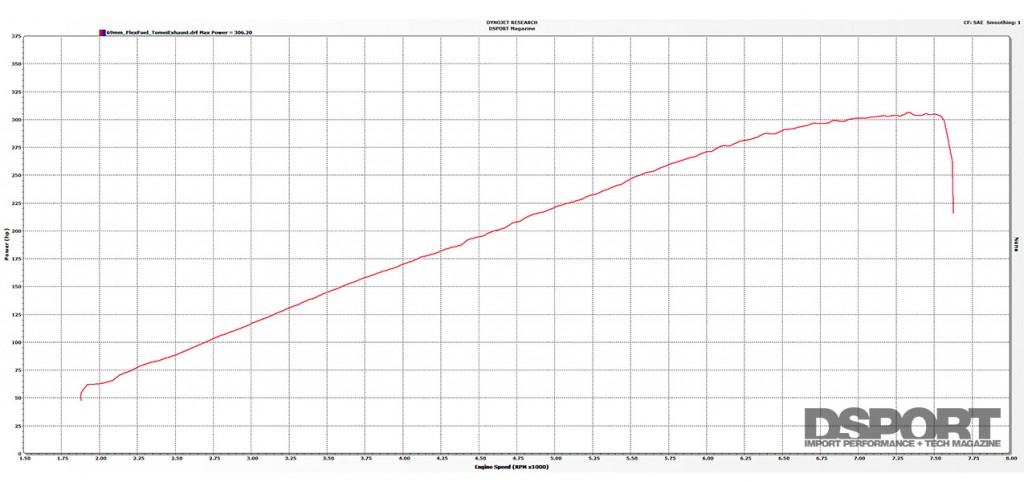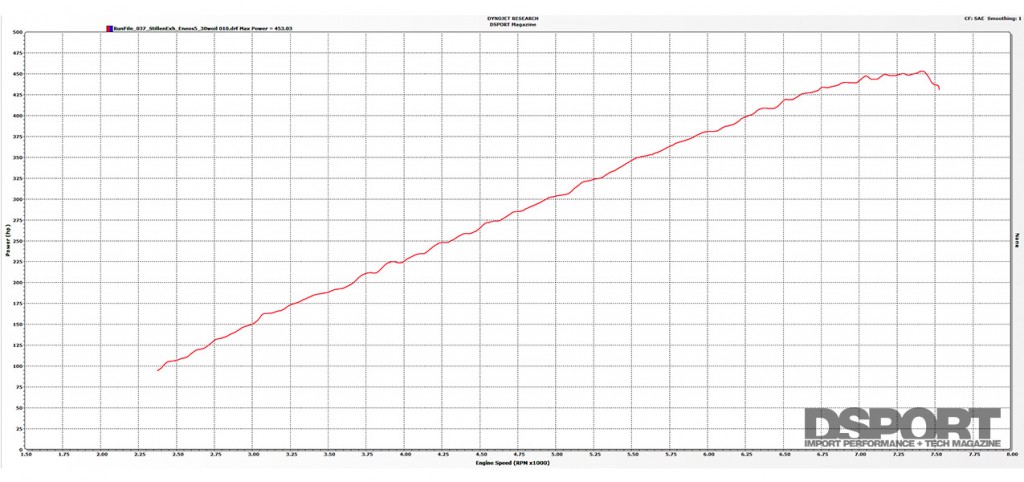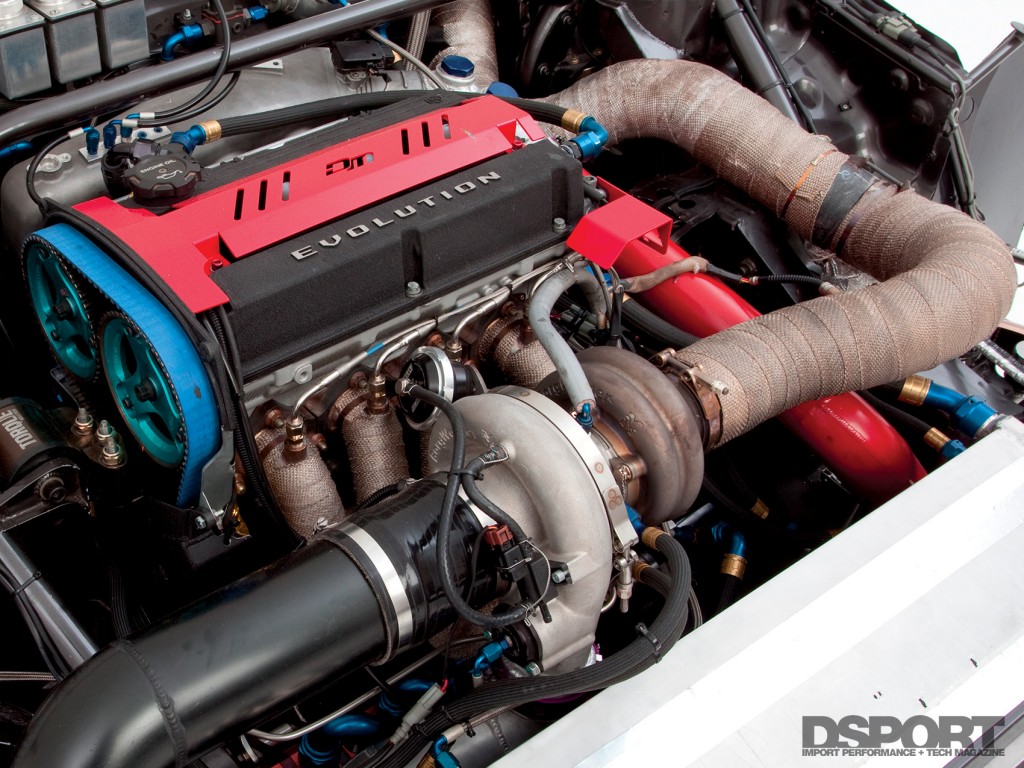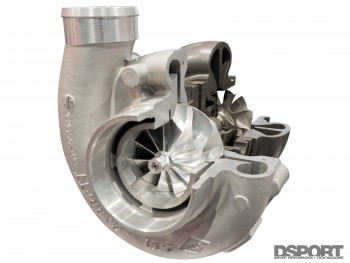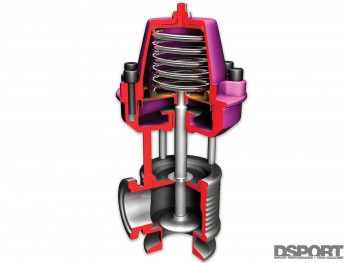Turbochargers Vs. Superchargers
How does a turbocharger’s boost response curve compare to a positive displacement and centrifugal supercharger? A turbocharger’s boost curve falls somewhere in between the two. The sizing of the turbocharger has a dramatic effect on how early or late in the powerband the turbo reaches its peak boost level. Once the engine reaches the RPM where the turbocharger produces peak boost, the boost curve generally performs like a positive-displacement supercharger keeping boost constant until redline. The exception to this occurs if the turbocharger goes beyond the horsepower capacity of the compressor section. In those cases, power will begin to drop off before redline. As for efficiency, the compressor efficiencies on most turbos edges out both centrifugal and positive-displacement superchargers. Easy to team with an intercooler, “intercooled boost” provides the ultimate in performance and reliability.
Notice how on this positive displacement supercharged engine, the power increases linearly. Once it reaches peak power, the chart plateaus all the way to redline.
While a supercharger delivers linear response down low, a turbocharged vehicle will usually have a curved, exponential graph until it hits peak boost and levels out.
Centrifugal superchargers also follow a linear power curve. Unlike positive- displacement superchargers, peak power is usually reached at redline.
Intercoolers: Cool Performers
Almost always a positive addition to a forced-induction system, intercoolers add both power and reliability. How do they work? Intercoolers reject some of the heat built up by the pressure increase of the air. This provides the engine with a higher quality (higher density) charge of intake air. Since the air temperature is reduced, the boost pressure is also reduced when an intercooler is added to a non-intercooled system. Although intercoolers do impose a restriction to airflow affecting the quantity (volume) of the airflow into the engine, the increase in the quality (density) of the air more than makes up for this.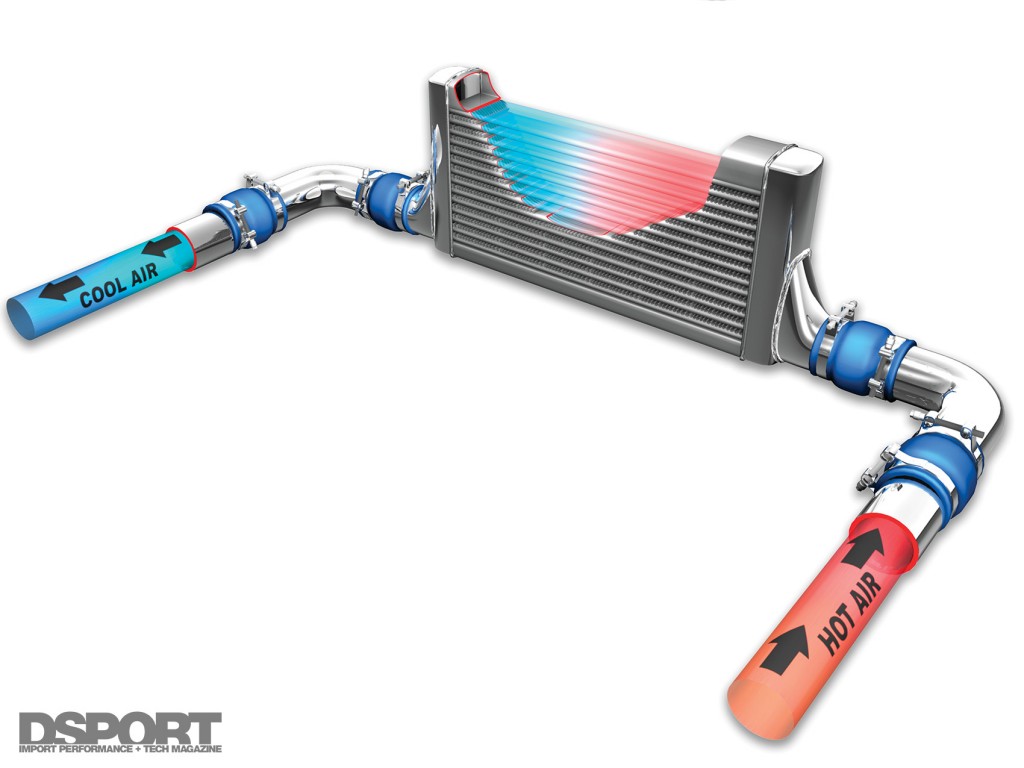
WTF Is Boost?
In forced-induction applications, “boost” is a measure of the pressure of the air in the engine’s intake manifold. As this pressure is increased, a greater volume of air is “pushed” into the cylinder when the intake valves open. In general, increasing the boost level of a supercharger or turbocharger (while adding the appropriate amount of additional fuel) produces more power. This is true to a point. With most things in life, including public highways, there are limits. When pressure increases, temperature also increases. When temperature increases, the density of air (mass of air found in a given volume) decreases.  Usually, moderately raising the boost level (going from six to nine psi in a street application supercharger) increases the volume of air substantially more than it reduces the density of the air so more power is made (when the appropriate amount of additional fuel is added). Basically, we get more quantity (volume) of air while losing a bit of quality (density) in the air. Therefore, the total mass of air induced into the engine is more, so more fuel can be added and more power can be made. When boost levels are too high and the efficiency of the compressor suffers, there may still be a higher volume of air being pushed into the engine, but the density of this charge is much lower due to increased outlet temps. Although we are increasing the quantity (volume), the quality (density) is so poor that the value (mass) of the air is less than at a lower boost level. The result is the total mass of air being pumped into the engine remains the same or is actually reduced, causing horsepower to remain the same or drop off. This phenomenon occurs when superchargers are driven to run at high boost levels where they are inefficient or when the compressor of a turbo is beyond its normal operating range. The equation that relates mass, density and volume is as follows:
Usually, moderately raising the boost level (going from six to nine psi in a street application supercharger) increases the volume of air substantially more than it reduces the density of the air so more power is made (when the appropriate amount of additional fuel is added). Basically, we get more quantity (volume) of air while losing a bit of quality (density) in the air. Therefore, the total mass of air induced into the engine is more, so more fuel can be added and more power can be made. When boost levels are too high and the efficiency of the compressor suffers, there may still be a higher volume of air being pushed into the engine, but the density of this charge is much lower due to increased outlet temps. Although we are increasing the quantity (volume), the quality (density) is so poor that the value (mass) of the air is less than at a lower boost level. The result is the total mass of air being pumped into the engine remains the same or is actually reduced, causing horsepower to remain the same or drop off. This phenomenon occurs when superchargers are driven to run at high boost levels where they are inefficient or when the compressor of a turbo is beyond its normal operating range. The equation that relates mass, density and volume is as follows:
Mass (kg) = Density (kg/m3) x Volume (m3)
In summary, more power is made whenever the mass of air and fuel pumped into the engine is increased. Raising boost levels increases the volume of air while the resulting increase in air temperature decreases the density of the air. The returns are only beneficial (make more horsepower) when the increase in volume outweighs the decrease in density.
Important Considerations
No matter how much additional air is forced into the engine, no increase in horsepower will be made unless a proper amount of fuel is added. Remember the energy that makes horsepower in an engine comes from the fuel, not the air. In general, every two horsepower produced requires one pound of fuel per hour. When modifications are performed that increase airflow into the engine, more air is available for combustion. The combustion of the additional fuel is what translates into additional horsepower.
Supercharger and turbocharger system manufacturers spend a great deal of time making sure their systems offer reliable performance. Reliability can be put in question when modifications are made to boost levels. Raising the boost level increases the chances of engine-damaging detonation. Fuel quality, the engine’s compression ratio, and total ignition timing limit the amount of boost that can be run without detonation. Exceeding that limit can result in a piston-melting fuel-lean condition or in detonation (where the fuel uncontrollably explodes in the cylinder causing possible engine damage). Remember, supercharger and turbocharger systems from the major manufacturers are engineered to provide reliable performance when used as directed. When considering raising boost levels (which may not be emission legal in some states) always contact the system manufacturer for their recommendations. Talking to the experts will provide an extra measure of reliability to ensure your ride doesn’t take any extended vacations from the streets.


